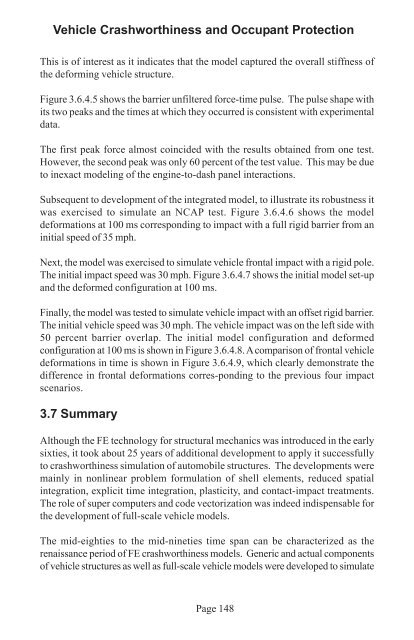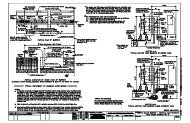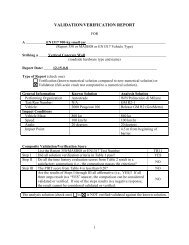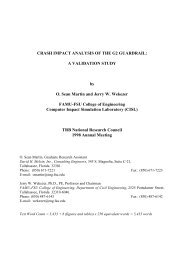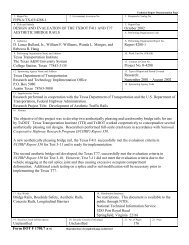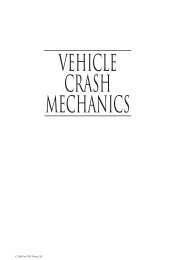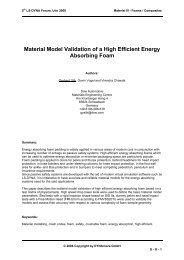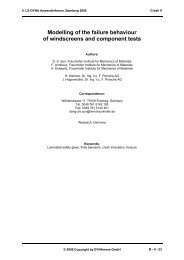Vehicle Crashworthiness and Occupant Protection - Chapter 3
Vehicle Crashworthiness and Occupant Protection - Chapter 3
Vehicle Crashworthiness and Occupant Protection - Chapter 3
You also want an ePaper? Increase the reach of your titles
YUMPU automatically turns print PDFs into web optimized ePapers that Google loves.
<strong>Vehicle</strong> <strong>Crashworthiness</strong> <strong>and</strong> <strong>Occupant</strong> <strong>Protection</strong><br />
This is of interest as it indicates that the model captured the overall stiffness of<br />
the deforming vehicle structure.<br />
Figure 3.6.4.5 shows the barrier unfiltered force-time pulse. The pulse shape with<br />
its two peaks <strong>and</strong> the times at which they occurred is consistent with experimental<br />
data.<br />
The first peak force almost coincided with the results obtained from one test.<br />
However, the second peak was only 60 percent of the test value. This may be due<br />
to inexact modeling of the engine-to-dash panel interactions.<br />
Subsequent to development of the integrated model, to illustrate its robustness it<br />
was exercised to simulate an NCAP test. Figure 3.6.4.6 shows the model<br />
deformations at 100 ms corresponding to impact with a full rigid barrier from an<br />
initial speed of 35 mph.<br />
Next, the model was exercised to simulate vehicle frontal impact with a rigid pole.<br />
The initial impact speed was 30 mph. Figure 3.6.4.7 shows the initial model set-up<br />
<strong>and</strong> the deformed configuration at 100 ms.<br />
Finally, the model was tested to simulate vehicle impact with an offset rigid barrier.<br />
The initial vehicle speed was 30 mph. The vehicle impact was on the left side with<br />
50 percent barrier overlap. The initial model configuration <strong>and</strong> deformed<br />
configuration at 100 ms is shown in Figure 3.6.4.8. A comparison of frontal vehicle<br />
deformations in time is shown in Figure 3.6.4.9, which clearly demonstrate the<br />
difference in frontal deformations corres-ponding to the previous four impact<br />
scenarios.<br />
3.7 Summary<br />
Although the FE technology for structural mechanics was introduced in the early<br />
sixties, it took about 25 years of additional development to apply it successfully<br />
to crashworthiness simulation of automobile structures. The developments were<br />
mainly in nonlinear problem formulation of shell elements, reduced spatial<br />
integration, explicit time integration, plasticity, <strong>and</strong> contact-impact treatments.<br />
The role of super computers <strong>and</strong> code vectorization was indeed indispensable for<br />
the development of full-scale vehicle models.<br />
The mid-eighties to the mid-nineties time span can be characterized as the<br />
renaissance period of FE crashworthiness models. Generic <strong>and</strong> actual components<br />
of vehicle structures as well as full-scale vehicle models were developed to simulate<br />
Page 148


